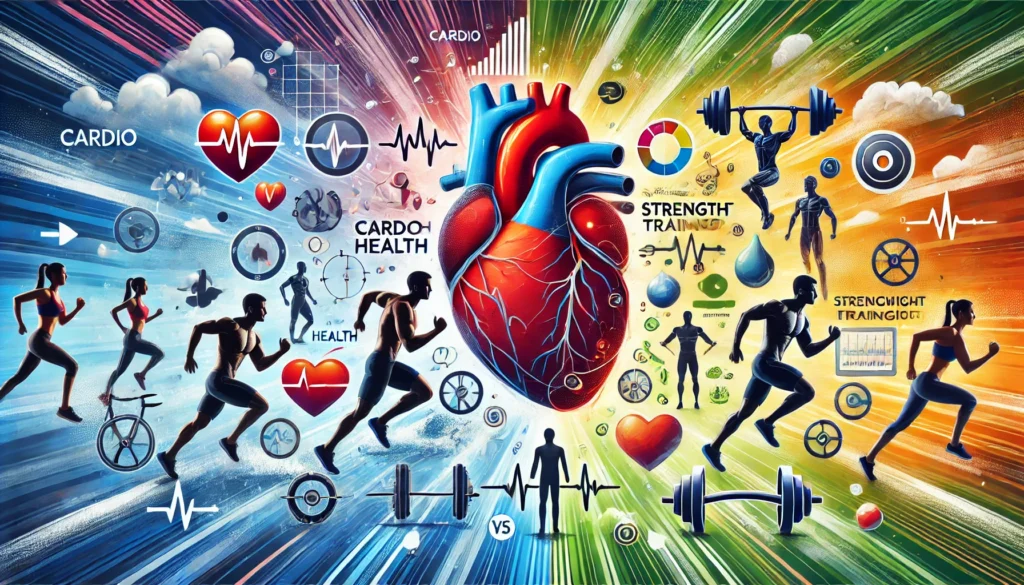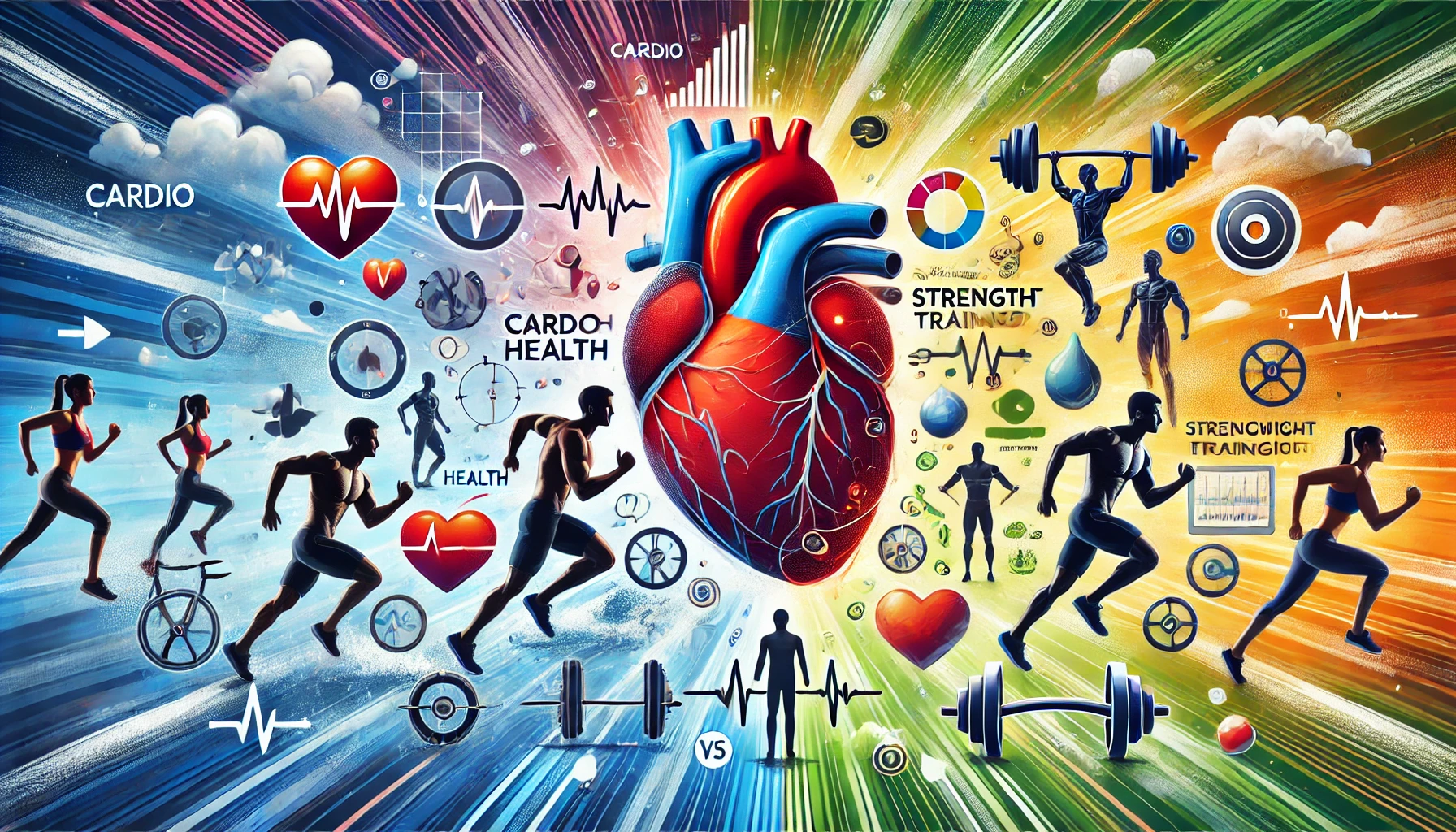The Science of Cardio vs. Strength Training: Which Is Better?

When it comes to fitness, two approaches often come to the forefront: cardio and strength training. Both have unique benefits, and choosing between them isn’t always straightforward. Whether you’re looking to lose weight, gain muscle, improve heart health, or just feel more energized, understanding the science behind cardio and strength training can help guide your fitness journey. Let’s dive into the science of each, their unique benefits, and how to choose the one (or blend) that’s best for you.
What Is Cardio?
Cardio, short for cardiovascular exercise, is any physical activity that raises your heart rate and increases blood circulation. Common examples include running, cycling, swimming, and dancing. The primary purpose of cardio is to improve heart and lung health, which is crucial for overall fitness.
Benefits of Cardio
- Heart Health: Regular cardio workouts strengthen the heart and improve blood flow, reducing the risk of heart disease.
- Calorie Burning: Cardio is effective for burning calories and aiding weight loss.
- Improved Endurance: Cardio helps boost stamina, making daily activities feel easier.
- Mental Health: Cardio exercises release endorphins, which can improve mood and reduce stress.
What Is Strength Training?
Strength training, also known as resistance training, involves using resistance to build muscle mass, strength, and endurance. This can include weight lifting, bodyweight exercises like push-ups, or resistance bands. Strength training focuses on specific muscles, promoting growth and enhancing metabolism.
Benefits of Strength Training
- Increased Muscle Mass: Building muscle not only improves physical appearance but also helps with functional strength.
- Higher Metabolism: Muscle burns more calories at rest than fat, meaning you can increase your resting metabolic rate with strength training.
- Improved Bone Health: Strength training improves bone density, reducing the risk of osteoporosis, especially as we age.
- Better Body Composition: Strength training sculpts and tones muscles, giving the body a more defined shape.
Cardio vs. Strength Training: A Deeper Dive
Weight Loss
Cardio often takes the spotlight for weight loss because it burns a high number of calories during the workout. However, studies suggest that strength training plays a crucial role in long-term weight management. When you build muscle through strength training, your body burns more calories even when at rest. This means that while cardio may burn more calories during the workout, strength training increases your basal metabolic rate (BMR) over time.
Fat Loss
Weight loss and fat loss are not the same. Cardio may help you lose weight on the scale, but strength training helps ensure that the weight you lose is fat rather than muscle. Research shows that a combination of both is the most effective for achieving a leaner body composition, as strength training helps retain muscle mass while cardio helps with calorie burning.
Heart Health
Both cardio and strength training are excellent for heart health, though in slightly different ways. Cardio is particularly beneficial for improving endurance and cardiovascular capacity. Strength training, on the other hand, reduces blood pressure and improves circulation by strengthening the heart and reducing stress on the arteries. The American Heart Association recommends incorporating both forms of exercise for optimal heart health.
Metabolic Benefits
While cardio temporarily increases your metabolism during the workout, strength training creates a longer-lasting effect known as “afterburn” or excess post-exercise oxygen consumption (EPOC). This means that after a strength workout, your body continues to burn calories at a higher rate while it repairs muscle tissue.
Mental Health
Both cardio and strength training have mental health benefits. Cardio releases endorphins, which are natural mood lifters, and can reduce stress and anxiety. Strength training has been shown to improve self-esteem, reduce symptoms of depression, and provide a sense of accomplishment as you hit new personal records.
Cardio or Strength Training: Which Is Better for You?
The answer depends on your specific fitness goals, lifestyle, and preferences.
- For Weight Loss: Combining both cardio and strength training yields the best results. Cardio helps create a calorie deficit, while strength training builds muscle to sustain weight loss long-term.
- For Heart Health: Prioritizing cardio is ideal, but adding strength training can provide additional cardiovascular benefits.
- For Building Muscle: Strength training is essential, but you can still benefit from some cardio to improve endurance and support recovery.
- For Longevity: A mix of both is recommended. Studies show that combining cardio with strength training reduces the risk of premature death, particularly from cardiovascular diseases.
How to Incorporate Both Cardio and Strength Training in Your Routine
If you’re looking to get the best of both worlds, try incorporating both cardio and strength training into your weekly schedule. Here’s a simple example:
- Three days of strength training focusing on different muscle groups (e.g., upper body, lower body, full body).
- Two days of cardio, which can include anything from high-intensity interval training (HIIT) to a steady-paced jog or bike ride.
- One day of active recovery, like a light walk or gentle stretching.
When it comes to the debate of cardio vs. strength training, the winner really depends on your personal fitness goals. For a well-rounded fitness routine, a combination of both is ideal. Cardio can enhance endurance and heart health, while strength training builds muscle and boosts metabolism. Both play essential roles in overall health and wellness, and incorporating a balance of each will yield the most comprehensive benefits.
By understanding the unique benefits of each, you can create a fitness routine that aligns with your goals and keeps you motivated. Remember, the best exercise routine is one that you enjoy and can maintain long-term, so find a balance that works for you and keeps you moving forward.

Recent Comments